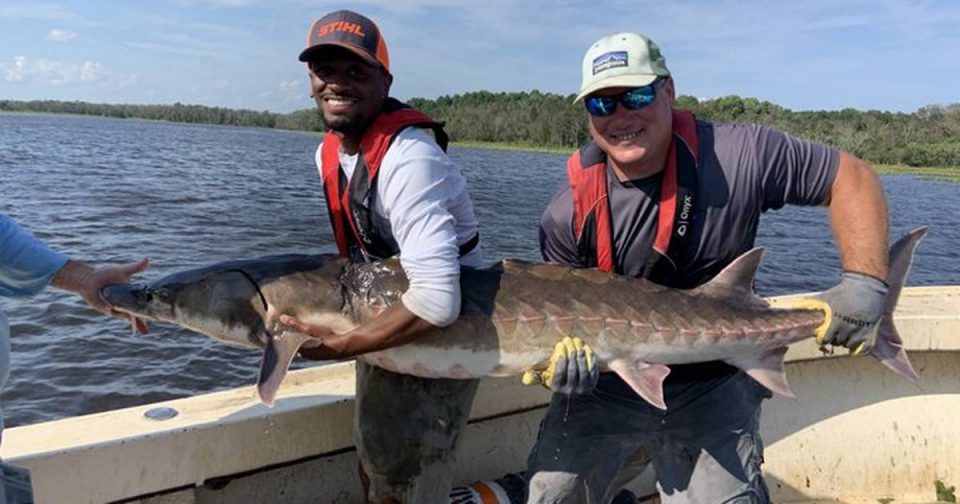Maryland could lose its only known population of Atlantic sturgeon. The Maryland Department of the Environment, MDE, has given tentative approval for a 35 million pound salmon factory, “AquaCon,” on the banks of Marshyhope Creek, an Eastern Shore tributary that connects to the Nanticoke River and supports spawning and nursery habitat of this federally protected endangered species. A recent estimate has sturgeon spawners numbering 40 or less. This tiny population is on the knife-edge of vulnerability, meaning that AquaCon’s effluents represent an existential threat.
AquaCon’s salmon production numbers are astronomical, exceeding Maryland’s total seafood production, exceeding harvests of Chesapeake blue crab, and topping U.S. Atlantic harvests of striped bass. Recirculating rearing technology produces impressive growth rates and efficient use of feed and water, yet the key challenge is waste management. Fast growing salmon poop a lot. On a daily basis, AquaCon’s salmon would generate several-fold more poop than the citizenry of Annapolis. Waste management technologies include a combination of combustion and capture of solids that are transported off-site. Still, containment systems for this audacious volume have never been tested, and accidents and even catastrophes (water and electrical outages, disease outbreaks, die-offs) are bound to happen, overwhelming the contingency of using Federalsburg’s single sewage treatment plant. Direct spills would make downstream reaches devoid of oxygen and uninhabitable for sturgeon and other native fishes.
The factory will also discharge over 2 million gallons each day of cold groundwater, required to flush wastes and off-flavors from salmon prior to harvest. The planned point of discharge is into a shallow channel just over 100-feet in width. The cold purge water will inundate the entire channel, impacting sturgeon spawning cues and offspring growth and survival. Further, adding salinity, as is often the case to lower stress in cultured salmon, would make large segments of the Marshyhope Creek uninhabitable for developing sturgeon eggs.
Swimming right past the proposed discharge location, sturgeon push several miles farther to the limit of the tide — moving through remarkably skinny waters less than 3 feet deep and 20 feet across. They have migrated hundreds of miles to get here. Why would these ocean giants ― 5 to 8 feet long and weighing up to 300 pounds ― do this? Clearly, they are biologically compelled to do so. Indeed, the same males, tagged with electronic tags, return year after year. Tagged females return every several years.
What brings sturgeon to the Marshyhope Creek to spawn? Peer into the often clear waters near Federalsburg and there, you may see small cobble beds, the necessary ingredient for sturgeon spawning. Cobble holds large sticky eggs off the silty bottom, and small beds of cobble comprise about 20% of the river bottom. Marshes and swamps that line most of the Marshyhope Creek may have helped preserve this little bit of sturgeon spawning oasis within Maryland by keeping silt and sediments at bay.
Maryland could lose its only sturgeon population. In this most critical of critical habitats, MDE’s tentative approval for AquaCon has set up an unfortunate lose-lose situation for Atlantic sturgeon and Maryland citizens. Maryland’s only Atlantic sturgeon have no choice about where to propagate — they are compelled to use the Marshyhope Creek and the connected upper Nanticoke. Similarly, restoration, recovery and appreciation for this dinosaur fish within Maryland can only happen here. MDE can still turn this to a win-win future for both Atlantic sturgeon and the salmon rearing industry by requiring AquaCon to pursue alternate Maryland sites. AquaCon has choices and better places it could go ― particularly those where effluent risks are reduced by discharging into much larger receiving bodies of water.
Dave Secor ([email protected]) is a professor and fisheries and environmental scientist at University of Maryland Center for Environmental Science, Chesapeake Biological Laboratory.


